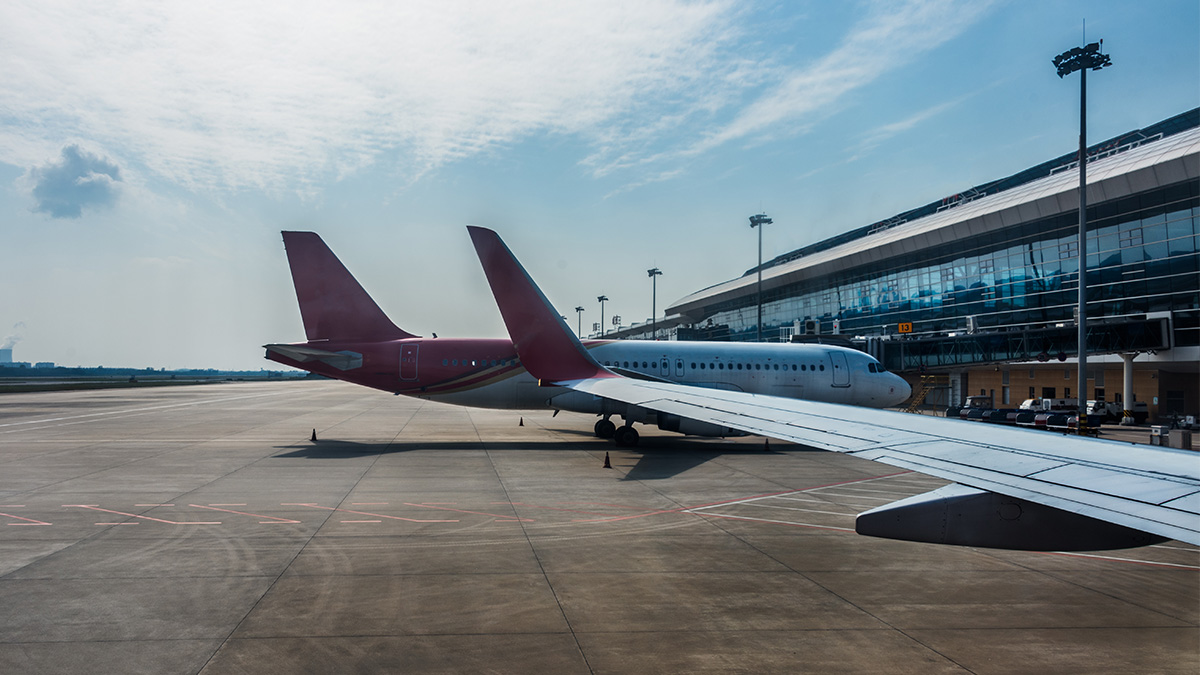IATA releases 2024 safety report
- 2/26/2025
- 265 Day

The International Air Transport
Association (IATA) released its 2024 Annual Safety Report. The industry
delivered another year of strong overall performance on safety including
showing improvements on the five-year average for several key parameters, but
it took a step back from an exceptional performance in 2023.
The all-accident rate of 13 per million flights (one
accident per 880,000 flights) was better than the five-year average of 1.25 but
worse than the 1.09 recorded in 2023.
There were seven fatal accidents in 2024, among 40.6
million flights. That is higher than the single fatal accident recorded in 2023
and the five-year average of five fatal accidents.
There were 244 on-board fatalities in 2024, compared
to the 72 fatalities reported in 2023 and the five-year average of 144.
Fatality risk remained low at 0.06, below the five-year average (0.10),
although double the 0.03 reported in 2023.
“Even with recent high profile aviation accidents, it
is important to remember that accidents are extremely rare. There were 40.6
million flights in 2024 and seven fatal accidents. Moreover, the long-term
story of aviation safety is one of continuous improvement. A decade ago, the
five-year average (2011-2015) was one accident for every 456,000 flights. Today,
the five-year average (2020-2024) is one accident for every 810,000 flights.
That improvement is because we know that every fatality is one too many. We honor the memory of every life lost in an
aviation accident with our deepest sympathies and ever greater resolve to make
flying even safer. And for that, the accumulation of safety data, including the
2024 safety report, is our most powerful tool,” said Willie Walsh, IATA’s
Director General.
Accidents and incidents related to conflict zones are
considered security-related events and are not included in this report. While
they do not appear in this data of this safety report, they, along with growing
incidents of Global Navigation Satellite System (GNSS) interference, are a top
concern for aviation safety requiring urgent global coordination.
“No civil aircraft should ever be a target—deliberate
or accidental—of military operations. Governments must step up, enhance
intelligence-sharing, and establish clearer global protocols to prevent such
tragedies and safeguard civilian aviation,” said Walsh.
Regional Safety Performance
North America
With 12 accidents, the all-accident rate improved from
1.53 per million sectors in 2023 to 1.20 in 2024 and was better than the
region’s five-year average of 1.26. Fatality risk has remained zero since 2020.
The most common accident types in 2024 were tail strikes, followed by runway
damage and runway excursions. While no accidents have been linked to debris
from space operations, the increasing number of rocket launches presents
challenges for air traffic management.
Asia-Pacific
With seven accidents in 2024, the all-accident rate
increased from 0.92 per million sectors in 2023 to 1.04 in 2024 but remained
below the five-year regional average of 1.10. Fatality risk was unchanged from
2023 at 0.15. There was no dominant classification for accidents in the region
which included tail strikes, runway damage and turbulence, among others.
Africa
With 10 accidents in 2024, the all-accident rate rose
from 8.36 per million sectors in 2023 to 10.59 in 2024, exceeding the five-year
average of 8.46. Africa (AFI) recorded the highest accident rate, though the
fatality risk remained at zero for the second year in a row. The most common
accident types in 2024 were runway excursions, followed by those related to
landing gear. Forty percent of all accidents involving AFI-based operators,
were on turboprop aircraft. Through the IATA Focus Africa initiative, the
Collaborative Aviation Safety Improvement Program (CASIP) continues to mobilize
resources to address key safety challenges.
Middle East and North Africa
With two accidents in 2024, the all-accident rate
improved from 1.12 accidents per million sectors in 2023 to 1.08 in 2024 and
was also better than its five-year average of 1.09. Fatality risk has remained
zero since 2019. While no accidents were related to GNSS interference, it has
emerged as a critical area of concern in the region.
Commonwealth of Independent States
With no accidents in 2024, the all-accident rate
improved from 1.05 accidents per million sectors in 2023 to zero in 2024, an
improvement over the region’s five-year average of 2.49. Fatality risk has
remained zero since 2022. GNSS interference and security risks linked to
regional conflicts remain key concerns for aviation safety in the area. Note
that the December 2024 downing of an Azerbaijan Airlines aircraft in a conflict
zone is excluded from accident classification in this safety report. It is also
important to note that CIS has limited accident information available and may
undergo larger revisions than normal once more data becomes available. This may
affect accident rate as well as fatality risk calculation.
Europe
With nine accidents in 2024, the all-accident rate
increased slightly from 0.95 per million sectors in 2023 to 1.02 accidents in
2024. This rate is on par with the region’s five-year average accident rate of
1.02. The fatality risk rate increased from zero in 2023 to 0.03 in 2024. The
largest proportion of accidents were related to tail strikes followed by runway
excursions.
North Asia
With a single accident, the all-accident rate
increased slightly from zero accidents per million sectors in 2023 to 0.13 in
2024. This was better than the region’s five-year average of 0.16 accidents per
million sectors. Fatality risk has remained zero since 2022. There was only one
accident involving North Asian-based operators and was related to a tail
strike.
Latin America and the Caribbean
With five accidents in 2024, the all-accident rate
increased from 0.73 accidents per million sectors in 2023 to 1.77 accidents in
2024. This was better than the five-year average of 2.00. The fatality risk
increased from 0.00 in 2023 to 0.35 in 2024. The largest proportion of
accidents was related to tail strikes.
Strengthening Safety Through Timely,
Comprehensive and Public Accident Reports
Delayed or incomplete accident reports deny critical
stakeholders—operators, manufacturers, regulators, and infrastructure
providers—vital insights that could further improve aviation safety. IATA’s
analysis of 2018-2023 accident investigations reveals that only 57% were
completed and published as obligated by the Chicago Convention.
Completion rates vary significantly across regions,
with North Asia leading at 75%, followed by North America (70%) and Europe
(66%), CIS (65%), Middle East and North Africa (60%), Latin America and the
Caribbean (57%), Asia-Pacific (53%), and Africa (20%).
“Accident investigation is a vital tool for improving
global aviation safety. To be effective, the reports of accident investigations
must be complete, accessible, and timely. Annex 13 of the Chicago Convention is
clear that this is a state’s obligation. Burying accident reports for political
considerations is completely unacceptable. And if capacity is the blocker, then
we need a coordinated global effort to provide technical support to countries
with limited accident investigation expertise,” said Walsh.








